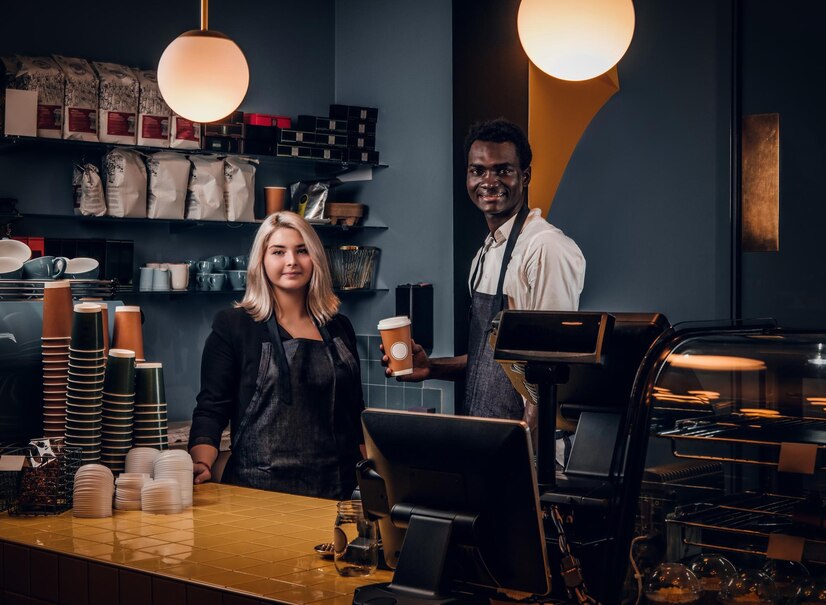1. Executive Summary
Business Name: (Example: “Brew Haven”)
Location: (Example: “Bandra, Mumbai”)
Business Model: A cozy café offering artisanal coffee, light meals, and a curated selection of pastries. The café will cater to both dine-in and takeaway customers, with a focus on creating a warm and inviting atmosphere.
Mission: To provide a welcoming space where customers can enjoy high-quality coffee and delicious food, while fostering a sense of community.
Vision: To establish “Brew Haven” as the go-to spot for coffee lovers and casual diners in the area, known for its exceptional service and ambiance.
2. Company Overview
Ownership Structure: Small business or partnership, where the founders share a passion for coffee and hospitality.
Business Goals:
Create a unique identity in the local café scene.
Achieve steady foot traffic by offering a consistent and delightful experience.
Expand the brand through customer loyalty and word-of-mouth referrals.
3. Market Analysis
Industry Overview: The café culture is booming, with a growing demand for specialty coffee and unique dining experiences. Consumers are increasingly looking for places that offer more than just food and drink – they seek atmosphere, community, and a place to unwind.
Target Market: Young professionals, students, and coffee enthusiasts aged 18-40. Secondary markets include remote workers and local residents looking for a comfortable place to relax.
Competitive Landscape: Competing with both established coffee chains and independent cafes. Differentiation will come through the quality of offerings, ambiance, and personalized service.
4. Products and Services
Menu Offerings:
Coffee: Specialty brews made from high-quality beans, including options like pour-over, espresso-based drinks, cold brew, and seasonal specials.
Food: A selection of fresh, light meals including sandwiches, salads, and breakfast items. Emphasis on locally sourced ingredients.
Pastries: Daily baked goods like croissants, muffins, and cakes, sourced from local bakers or made in-house.
Beverages: In addition to coffee, offering teas, smoothies, and artisanal soft drinks.
Unique Selling Proposition (USP): A blend of exceptional coffee, cozy ambiance, and personalized service that caters to the local community’s tastes and preferences.
Customer Experience: Creating a warm, inviting space with comfortable seating, free Wi-Fi, and a relaxed vibe. Encouraging customers to linger, work, or socialize.
5. Marketing and Sales Strategy
Brand Identity: Position “Brew Haven” as a place where coffee meets community. Focus on building a brand that resonates with the local culture and lifestyle.
Digital Marketing: Using Instagram and Facebook to showcase the café’s ambiance, menu items, and special events. Implementing social media campaigns that highlight customer stories, new menu launches, and promotions.
Loyalty Program: Introducing a rewards program that encourages repeat visits. For example, offering a free coffee after every 10 purchases or discounts on birthdays.
Community Engagement: Hosting events such as open mic nights, coffee tasting sessions, or book clubs to attract different customer segments and build a sense of community.
Seasonal Promotions: Launching special offers during festive seasons or introducing limited-time menu items to draw in crowds.
6. Operational Plan
Café Layout: Designing a space that maximizes comfort and efficiency. Example: Cozy seating arrangements, a well-organized counter for quick service, and aesthetically pleasing interiors that reflect the brand’s personality.
Suppliers: Partnering with local roasters for coffee beans and sourcing fresh ingredients from nearby farmers and bakeries to ensure quality and support the local economy.
Staffing: Hiring experienced baristas and friendly, customer-oriented staff who are passionate about coffee and hospitality. Providing ongoing training to maintain high service standards.
Daily Operations: Implementing efficient workflows to ensure smooth operations during peak hours. For example, having a well-defined process for order taking, preparation, and serving to minimize wait times.
7. Financial Plan
Revenue Streams: Primarily from in-café sales, with potential additional revenue from takeaway orders, merchandise (like branded mugs or coffee beans), and event hosting.
Cost Structure: Keeping a close eye on fixed costs like rent, utilities, and staff salaries, while managing variable costs like ingredients and marketing expenses.
Financial Projections: Setting realistic revenue targets based on expected foot traffic and average spend per customer. Example: Projecting a steady increase in revenue as brand awareness grows and loyalty programs take effect.
Break-even Analysis: Identifying the point at which monthly sales cover all operating expenses, with a focus on achieving this milestone within the first year.
8. Risk Management
Market Risks: Staying adaptable to changing customer preferences and competitive pressures. Regularly updating the menu and maintaining strong relationships with suppliers to ensure consistent quality.
Operational Risks: Ensuring smooth day-to-day operations by having backup plans for staffing, equipment maintenance, and supply chain disruptions.
Financial Risks: Managing cash flow carefully to avoid liquidity issues, particularly in the early stages. Building a financial cushion to handle unexpected costs or slow periods.






